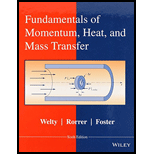
(a)
Interpretation:
The fluid element deformation is to be sketched when
Concept Introduction:
Fluid element deformation occurs when the element changes its position with respect to its previous position. There are different types of deformation depending upon the aspect of change. These can be translation, rotation, angular, and volumetric deformations.
(a)
Answer to Problem 7.1P
The fluid element deformation when 1y
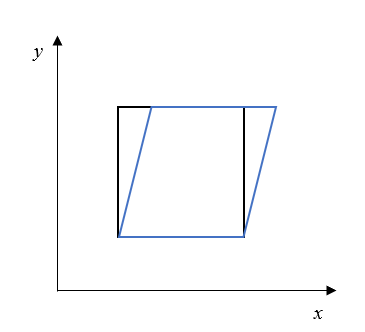
Explanation of Solution
Take a fluid element and plot it on a graph along x and y axis as shown below:
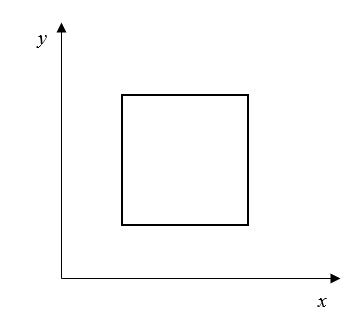
For a large change in
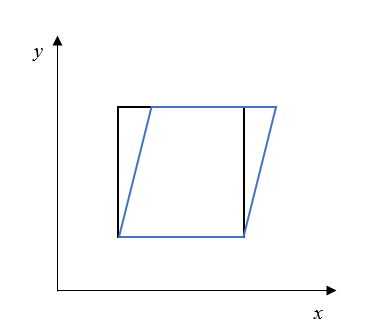
(b)
Interpretation:
The fluid element deformation is to be sketched when
Concept Introduction:
Fluid element deformation occurs when the element changes its position with respect to its previous position. There are different types of deformation depending upon the aspect of change. These can be translation, rotation, angular, and volumetric deformations.
(b)
Answer to Problem 7.1P
The fluid element deformation when
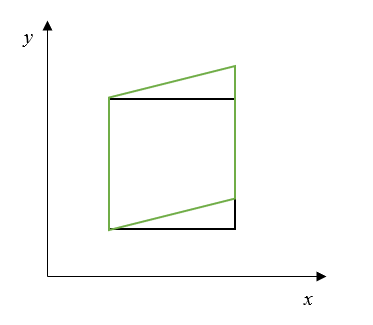
Explanation of Solution
Take a fluid element and plot it on a graph along x and y axis as shown below:
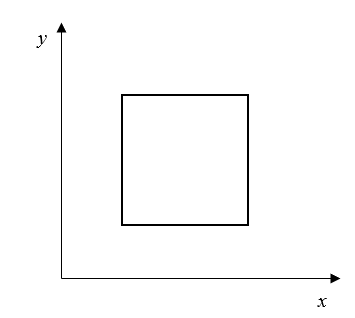
For a large change in
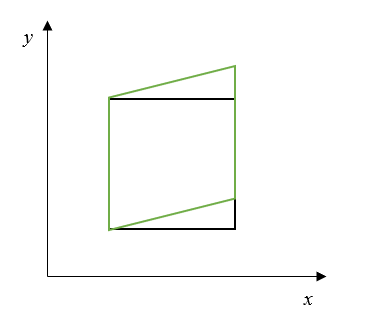
Want to see more full solutions like this?
Chapter 7 Solutions
Fundamentals of Momentum, Heat, and Mass Transfer
- chemical engineering The answer for the specific molar volume of nitrogen gas is 12.089x10^(-5) m^3/mol. How was this answer determined? You need to use the ideal gas law to determine the specific molar volume. Do not determine the third specific enthalpy.arrow_forwardUsing Raoult's law for water and Henry's law for nitrogen, calculate the pressure and gas-phase composition (mole fractions) in a system containing a liquid that is 0.500 mole% N2 and 99.50 mole% water in equilibrium with nitrogen gas and water vapor at 70.0 °C. The Henry's law constant for nitrogen in water is recommended by NIST to be well represented by KH = 0.000625 exp[1300 (1/T - 1/298.15)] mol N2/(kg H2O bar), where T is measured in Kelvin. Physical Property Tables Unit Conversion Check the unit conversions and examine the definition of H. Estimate the Henry's law constant H [atm/(mole fraction N2)] for nitrogen in water at T = 70.0 °C. i ! x 104 atm/(mole fraction N2)arrow_forwardcan you help me answer this, you can find what the data need in perry's chemical engineering handbook 9th editionarrow_forward
- chemical engineering. Compressing hydrogen gas from 1 atm to 300 atm at 25 deg Celcius Determine the specific enthalpy.arrow_forwardRotorences] Use the data below from an electron impact mass spectrum of a pure compound to deduce its structure. Draw your structure in the drawing window. Data selected from the NIST WebBook, https://webbook.nist.gov/chemistry/ m/z Relative intensity 73 1.0 72 25 57 8 43 100 29 17 • You do not have to consider stereochemistry. • You do not have to explicitly draw H atoms. • In cases where there is more than one answer, just draw one. 81 + ་་ CH4 { [ ? Previous Nextarrow_forwardOnly focus on H(3), which the answer is minus 1.26 KJ/mol. This also has the ideal gas of nitrogen gas N2. Two enthalpies need to be calculated for this. The first enthalpy is H = (specific volume) times (pressure difference). For the specific volume of nitrogen, how was 12.089 x10^(-5) m^3/mol obtained? I understand the second enthalpy for the heat capacity for nitrogen gas.arrow_forward
- chemical engineering. The answer for H(3) is minus 1.26 KJ/mol. Demonstrate the reference state to the process state for nitrogen gas. I know that is an ideal gas law for the nitrogen gas. I know how to calculate the heat capacity for this.arrow_forwardQ. VI: An equimolar liquid mixture of benzene and toluene is separated into two product streams by distillation. At each point in the column some of the liquid vaporizes and some of the vapor stream condenses. The vapor leaving the top of the column, which contains 97 mole% benzene, is completely condensed and split into two equal fractions: one is taken off as the overhead product stream, and the other (the reflux) is recycled to the top of the column. The overhead product stream contains 89.2% of the benzene fed to the column. The liquid leaving the bottom of the column is fed to a partial reboiler in which 45% of it is vaporized. The vapor generated in the reboiler (the boilup) is recycled to become the rising vapor stream in the column, and the residual reboiler liquid is taken off as the bottom product stream. The compositions of the streams leaving the reboiler are governed by the relation, YB/(1 - YB) XB/(1 - XB) = 2.25 where YB and XB are the mole fractions of benzene in the…arrow_forwardQ. IV: Aqueous solutions of the amino-acid L-isoleucine (Ile) are prepared by putting 100.0 grams of pure water into each of six flasks and adding different precisely weighed quantities of lle to each flask. The densities of the solutions at 50.0±0.05°C are then measured with a precision densitometer, with the following results. r (g lle/100 g H2O) 0.000 p (g solution/cm³) 0.8821 0.98803 0.98984 1.7683 0.99148 2.6412 3.4093 0.99297 0.99439 4.2064 0.99580 (a) Plot a calibration curve showing the mass ratio, r, as a function of solution density, p, and fit a straight line to the data to obtain an equation of the form r = ap + b. (b) The volumetric flow rate of an aqueous lle solution at a temperature of 50°C is 150 L/h. The density of the sample of the stream is measured and found to be 0.9940 g/cm³. Use the calibration equation to estimate the mass flow rate of lle in the stream (in kg lle/h). (c) It has been later discovered that the thermocouple used to measure the stream temperature…arrow_forward
- chemical engineering. The answer is minus 1.26 KJ/mol for H(3). Demonstrate the reference state to the process state and calculations. I only need help for determing that variable.arrow_forwardExhaust gas from a power plant passes through a 15-by-20-it rectangular duct at an average velocity of 50 ft/s. The total length of duct is 250 ft and there are two 90° bends.The gas is at 180°F and about 1 atm, and the properties are similar to those of air. Calculate the pressure drop in the duet and the power required to overcome pressure losses.arrow_forwardUntuk sistem gas etilena (1)/propilena (2), estimasi (f^1, f^2, $^1, dan ^2 pada t = 150°C, P = 30 bar, dan y1 = 0,35; kij = 0. (a) Dengan menerapkan Persamaan (10.63). (b) Dengan asumsi bahwa campuran adalah lingkungan idealarrow_forward
 Introduction to Chemical Engineering Thermodynami...Chemical EngineeringISBN:9781259696527Author:J.M. Smith Termodinamica en ingenieria quimica, Hendrick C Van Ness, Michael Abbott, Mark SwihartPublisher:McGraw-Hill Education
Introduction to Chemical Engineering Thermodynami...Chemical EngineeringISBN:9781259696527Author:J.M. Smith Termodinamica en ingenieria quimica, Hendrick C Van Ness, Michael Abbott, Mark SwihartPublisher:McGraw-Hill Education Elementary Principles of Chemical Processes, Bind...Chemical EngineeringISBN:9781118431221Author:Richard M. Felder, Ronald W. Rousseau, Lisa G. BullardPublisher:WILEY
Elementary Principles of Chemical Processes, Bind...Chemical EngineeringISBN:9781118431221Author:Richard M. Felder, Ronald W. Rousseau, Lisa G. BullardPublisher:WILEY Elements of Chemical Reaction Engineering (5th Ed...Chemical EngineeringISBN:9780133887518Author:H. Scott FoglerPublisher:Prentice Hall
Elements of Chemical Reaction Engineering (5th Ed...Chemical EngineeringISBN:9780133887518Author:H. Scott FoglerPublisher:Prentice Hall
 Industrial Plastics: Theory and ApplicationsChemical EngineeringISBN:9781285061238Author:Lokensgard, ErikPublisher:Delmar Cengage Learning
Industrial Plastics: Theory and ApplicationsChemical EngineeringISBN:9781285061238Author:Lokensgard, ErikPublisher:Delmar Cengage Learning Unit Operations of Chemical EngineeringChemical EngineeringISBN:9780072848236Author:Warren McCabe, Julian C. Smith, Peter HarriottPublisher:McGraw-Hill Companies, The
Unit Operations of Chemical EngineeringChemical EngineeringISBN:9780072848236Author:Warren McCabe, Julian C. Smith, Peter HarriottPublisher:McGraw-Hill Companies, The





